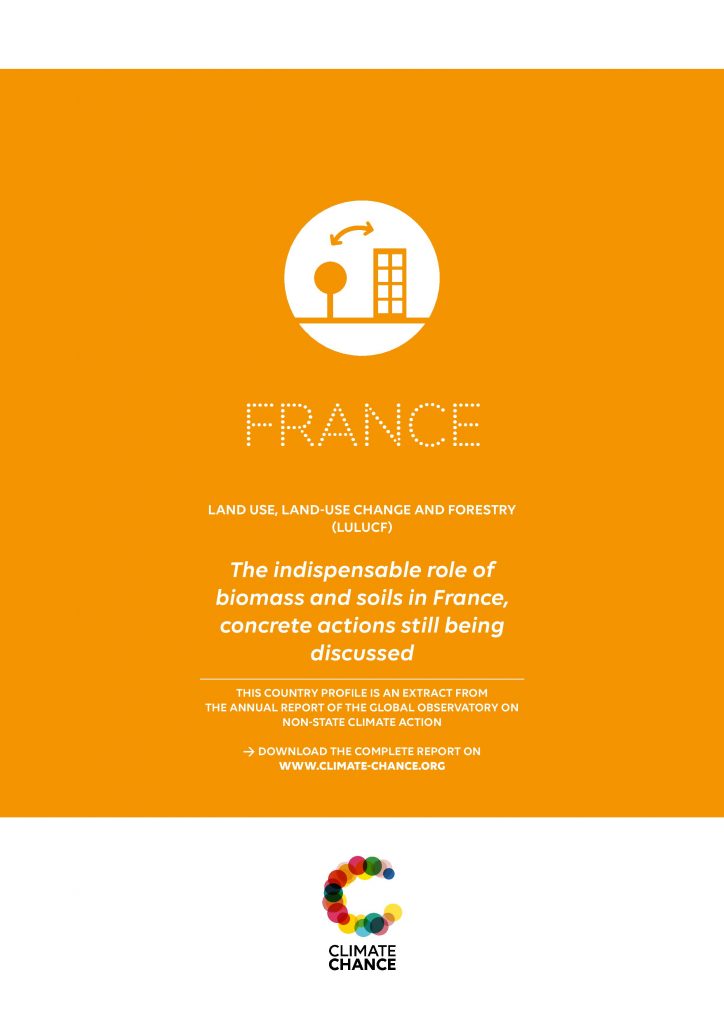France • The indispensable role of biomass and soils, concrete actions still being discussed
In 2016, in metropolitan France, the land sector was used to offset 9% of the emissions of other sectors. The goal is to reach 100% or more by 2050, both by reducing emissions and increasing this carbon sink.

Introduction
In 2016, in metropolitan France, the land sector was used to offset 9% of the emissions of other sectors. The goal is to reach 100% or more by 2050, both by reducing emissions and increasing this carbon sink. Research organisations play a key role for this sector where scientific uncertainties are still very significant and where debates on the effects of the actions carried out are not yet settled. The mobilisation in recent years of private actors (timber industry, forest owners, farmers) has resulted in the growing establishment of the private sector, the development of the wood energy and timber markets, national voluntary carbon offset projects and agricultural practices that promote the storage of carbon in soils, through the 4 per 1000 initiative.
Contents
1 • Current situation and uncertainties about the analysis
The current role of the land sector in France’s GHG balance sheet
What are we talking about?
What is the current sink due to? What levers can be used to maximise it?
Recent research
In 2017 and 2018, strategic discussions brought together state and non-state actors
2 • Actions in the forest-timber sector
Recent debates between non-state actors on the best actions to be taken in forestry
Mobilisation and organisation of the sector
The forestry sector is mobilising in carbon recovery
Local authorities now include LULUCF sector in their climate strategies
Carbon storage actions in hedges have been developed
Afforestation and reforestation are being developed
The rise of wooden constructions
Wood fuel and biomass heating plants: manufacturers and communities are investing
3 • Actions to maintain and increase carbon in soil
The launch of the 4 per 1000 initiative brings together scientists, decision-makers and local stakeholders for the storage of carbon in soil
The agri-food sector is developing labels and actions for storing carbon in the soil
The actions of elected representatives, developers and citizens make it possible to start limiting the artificialisation of land
Conclusion
To conclude, we can say that in recent years, the climate role of biomass and soils is increasingly recognised by non-state actors. Even if many structural obstacles remain, France’s strengths (its agricultural and forestry heritage) are the target of an increasing number of projects by forestry and agricultural stakeholders and research organisations. The years 2016 to 2018 marked the transition to the post-Paris Agreement era in which the overarching principle of carbon neutrality is beginning to be reflected in the actions of forest and agricultural stakeholders.


